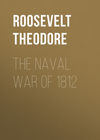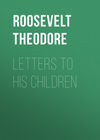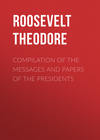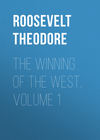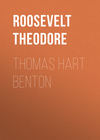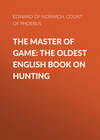Czytaj książkę: «The Naval War of 1812», strona 14
Chapter VI
1813
ON THE LAKES
ONTARIO—Comparison of the rival squadrons–Chauncy takes York and Fort George—Yeo is repulsed at Sackett's Harbor, but keeps command of the lake—Chauncy sails—Yeo's partial victory off Niagara–Indecisive action off the Genesee—Chauncy's partial victory off Burlington, which gives him the command of the lake—ERIE—Perry's success in creating a fleet—His victory—CHAMPLAIN—Loss of the Growler and Eagle—Summary.
ONTARIO.
Winter had almost completely stopped preparations on the American side. Bad weather put an end to all communication with Albany or New York, and so prevented the transit of stores, implements, etc. It was worse still with the men, for the cold and exposure so thinned them out that the new arrivals could at first barely keep the ranks filled. It was, moreover, exceedingly difficult to get seamen to come from the coast to serve on the lakes, where work was hard, sickness prevailed, and there was no chance of prize-money. The British government had the great advantage of being able to move its sailors where it pleased, while in the American service, at that period, the men enlisted for particular ships, and the only way to get them for the lakes at all was by inducing portions of crews to volunteer to follow their officers thither. [Footnote: Cooper, ii, 357. One of James' most comical misstatements is that on the lakes the American sailors were all "picked men." On p. 367, for example, in speaking of the battle of Lake Erie he says: "Commodore Perry had picked crews to all his vessels." As a matter of fact Perry had once sent in his resignation solely on account of the very poor quality of his crews, and had with difficulty been induced to withdraw it. Perry's crews were of hardly average excellence, but then the average American sailor was a very good specimen.] However, the work went on in spite of interruptions. Fresh gangs of shipwrights arrived, and, largely owing to the energy and capacity of the head builder, Mr. Henry Eckford (who did as much as any naval officer in giving us an effective force on Ontario), the Madison was equipped, a small despatch sloop, The Lady of the Lake prepared, and a large new ship, the General Pike, 28, begun, to mount 13 guns in each broadside and 2 on pivots.
Meanwhile Sir George Prevost, the British commander in Canada, had ordered two 24-gun ships to be built, and they were begun; but he committed the mistake of having one laid down in Kingston and the other in York, at the opposite end of the lake. Earle, the Canadian commodore, having proved himself so incompetent, was removed; and in the beginning of May Captain Sir James Lucas Yeo arrived, to act as commander-in-chief of the naval forces, together with four captains, eight lieutenants, twenty-four midshipmen, and about 450 picked seamen, sent out by the home government especially for service on the Canada lakes. [Footnote: James, vi, 353.]
The comparative force of the two fleets or squadrons it is hard to estimate. I have already spoken of the difficulty in finding out what guns were mounted on any given ship at a particular time, and it is even more perplexing with the crews. A schooner would make one cruise with but thirty hands; on the next it would appear with fifty, a number of militia having volunteered as marines. Finding the militia rather a nuisance, they would be sent ashore, and on her third cruise the schooner would substitute half a dozen frontier seamen in their place. It was the same with the larger vessels. The Madison might at one time have her full complement of 200 men; a month's sickness would ensue, and she would sail with but 150 effectives. The Pike's crew of 300 men at one time would shortly afterward be less by a third in consequence of a draft of sailors being sent to the upper lakes. So it is almost impossible to be perfectly accurate; but, making a comparison of the various authorities from Lieutenant Emmons to James, the following tables of the forces may be given as very nearly correct. In broadside force I count every pivot gun, and half of those that were not on pivots.
CHAUNCY'S SQUADRON.

This is not materially different from James' account (p. 356), which gives Chauncy 114 guns, 1,193 men, and 2,121 tons. The Lady of the Lake, however, was never intended for anything but a despatch boat, and the Scourge and Hamilton were both lost before Chauncy actually came into collision with Yeo. Deducting these, in order to compare the two foes, Chauncy had left 11 vessels of 2,265 tons, with 865 men and 92 guns throwing a broadside of 1,230 pounds.
YEO'S SQUADRON.

This differs but slightly from James, who gives Yeo 92 guns throwing a broadside of 1,374 pounds, but only 717 men. As the evidence in the court-martial held on Captain Barclay, and the official accounts (on both sides) of Macdonough's victory, convict him of very much underrating the force in men of the British on Erie and Champlain, it can be safely assumed that he has underestimated the force in men on Lake Ontario. By comparing the tonnage he gives to Barclay's and Downie's squadrons with what it really was, we can correct his account of Yeo's tonnage.
The above figures would apparently make the two squadrons about equal, Chauncy having 95 men more, and throwing at a broadside 144 pounds shot less than his antagonist. But the figures do not by any means show all the truth. The Americans greatly excelled in the number and calibre of their long guns. Compared thus, they threw at one discharge 694 pounds of long-gun metal and 536 pounds of carronade metal; while the British only threw from their long guns 180 pounds, and from their carronades 1,194. This unequal distribution of metal was very much in favor of the Americans. Nor was this all. The Pike, with her 15 long 24's in battery was an overmatch for any one of the enemy's vessels, and bore the same relation to them that the Confiance, at a later date, did to Macdonough's squadron. She should certainly have been a match for the Wolfe and Melville together, and the Madison and Oneida for the Royal George and Sydney Smith. In fact, the three heavy American vessels ought to have been an overmatch for the four heaviest of the British squadron, although these possessed the nominal superiority. And in ordinary cases the eight remaining American gun-vessels would certainly seem to be an overmatch for the two British schooners, but it is just here that the difficulty of comparing the forces comes in. When the water was very smooth and the wind light, the long 32's and 24's of the Americans could play havoc with the British schooners, at a distance which would render the carronades of the latter useless. But the latter were built for war, possessed quarters and were good cruisers, while Chauncy's schooners were merchant vessels, without quarters, crank, and so loaded down with heavy metal that whenever it blew at all hard they could with difficulty be kept from upsetting, and ceased to be capable even of defending themselves. When Sir James Yeo captured two of them he would not let them cruise with his other vessels at all, but sent them back to act as gun-boats, in which capacity they were serving when recaptured; this is a tolerable test of their value compared to their opponents. Another disadvantage that Chauncy had to contend with, was the difference in the speed of the various vessels. The Pike and Madison were fast, weatherly ships; but the Oneida was a perfect slug, even going free, and could hardly be persuaded to beat to windward at all. In this respect Yeo was much better off; his six ships were regular men-of-war, with quarters, all of them seaworthy, and fast enough to be able to act with uniformity and not needing to pay much regard to the weather. His force could act as a unit; but Chauncy's could not. Enough wind to make a good working breeze for his larger vessels put all his smaller ones hors de combat: and in weather that suited the latter, the former could not move about at all. When speed became necessary the two ships left the brig hopelessly behind, and either had to do without her, or else perhaps let the critical moment slip by while waiting for her to come up. Some of the schooners sailed quite as slowly; and finally it was found out that the only way to get all the vessels into action at once was to have one half the fleet tow the other half. It was certainly difficult to keep the command of the lake when, if it came on to blow, the commodore had to put into port under penalty of seeing a quarter of his fleet founder before his eyes. These conflicting considerations render it hard to pass judgment; but on the whole it would seem as if Chauncy was the superior in force, for even if his schooners were not counted, his three square-rigged vessels were at least a match for the four square-rigged British vessels, and the two British schooners would not have counted very much in such a conflict. In calm weather he was certainly the superior. This only solves one of the points in which the official letters of the two commanders differ: after every meeting each one insists that he was inferior in force, that the weather suited his antagonist, and that the latter ran away, and got the worst of it; all of which will be considered further on.
In order to settle toward which side the balance of success inclined, we must remember that there were two things the combatants were trying to do viz.:
(1) To damage the enemy directly by capturing or destroying his vessels. This was the only object we had in view in sending out ocean cruisers, but on the lakes it was subordinated to:—
(2) Getting the control of the lake, by which invaluable assistance could be rendered to the army. The most thorough way of accomplishing this, of course, was by destroying the enemy's squadron; but it could also be done by building ships too powerful for him to face, or by beating him in some engagement which, although not destroying his fleet, would force him to go into port. If one side was stronger, then the weaker party by skillful manoeuvring might baffle the foe, and rest satisfied by keeping the sovereignty of the lake disputed; for, as long as one squadron was not undisputed master it could not be of much assistance in transporting troops attacking forts, or otherwise helping the military.
In 1813 the Americans gained the first point by being the first to begin operations. They were building a new ship, afterward the Pike, at Sackett's Harbor; the British were building two new ships, each about two thirds the force of the Pike, one at Toronto (then called York), one at Kingston. Before these were built the two fleets were just on a par; the destruction of the Pike would give the British the supremacy; the destruction of either of the British ships, provided the Pike were saved, would give the Americans the supremacy. Both sides had already committed faults. The Americans had left Sackett's Harbor so poorly defended and garrisoned that it invited attack, while the British had fortified Kingston very strongly, but had done little for York, and, moreover, ought not to have divided their forces by building ships in different places.
Commodore Chauncy's squadron was ready for service on April 19th, and on the 25th he made sail with the Madison, Lieutenant-Commander Elliott, floating his own broad pennant, Oneida, Lieutenant Woolsey, Hamilton, Lieutenant McPherson, Scourge, Mr. Osgood, Tompkins, Lieutenant Brown, Conquest, Lieutenant Pettigrew, Growler, Mr. Mix, Julia, Mr. Trant, Asp, Lieutenant Smith, Pert, Lieutenant Adams, American, Lieutenant Chauncy, Ontario, Mr. Stevens, Lady of the Lake, Mr. Hinn, and Raven, transport, having on board General Dearborn and 1700 troops, to attack York, which was garrisoned by about 700 British regulars and Canadian militia under Major-General Sheafe. The new 24-gun ship was almost completed, and the Gloucester 10-gun brig was in port; the guns of both vessels were used in defence of the port. The fleet arrived before York early on April 27th, and the debarkation began at about 8 A.M. The schooners beat up to the fort under a heavy cannonade, and opened a spirited fire from their long guns; while the troops went ashore under the command of Brigadier-General Pike. The boats were blown to leeward by the strong east wind, and were exposed to a galling fire, but landed the troops under cover of the grape thrown by the vessels. The schooners now beat up to within a quarter of a mile from the principal work, and opened heavily upon it, while at the same time General Pike and the main body of the troops on shore moved forward to the assault, using their bayonets only. The British regulars and Canadian militia, outnumbered three to one (including the American sailors) and with no very good defensive works, of course had to give way, having lost heavily, especially from the fire of the vessels. An explosion immediately afterward killed or wounded 250 of the victors, including General Pike. The Americans lost, on board the fleet, 4 killed, including midshipmen Haifield and Thompson, and 8 wounded; [Footnote: Letter of Commodore Chauncy, April 28, 1813.] and of the army, [Footnote: James, "Military Occurrences" (London, 1818), vol. i, p. 151.] 14 killed and 32 wounded by the enemy's fire, and 52 killed and 180 wounded by the explosion: total loss, 288. The British regulars lost 130 killed and wounded, including 40 by the explosion; [Footnote: Lossing's "Field-Book of the War of 1812," p. 581. The accounts vary somewhat.] together with 50 Canadians and Indians, making a total of 180, besides 290 prisoners. The 24-gun ship was burned, her guns taken away, and the Gloucester sailed back to Sackett's Harbor with the fleet. Many military and naval stores were destroyed, and much more shipped to the Harbor. The great fault that the British had committed was in letting the defences of so important a place remain so poor, and the force in it so small. It was impossible to resist very long when Pike's troops were landed, and the fleet in position. On the other hand, the Americans did the work in good style; the schooners were finely handled, firing with great precision and completely covering the troops, who, in turn, were disembarked and brought into action very handsomely.
After being detained in York a week by bad weather the squadron got out, and for the next fortnight was employed in conveying troops and stores to General Dearborn. Then it was determined to make an attack on Fort George, where the British General Vincent was stationed with from 1,000 [Footnote: James, "Military Occurrences," i, p. 151.] to 1,800 [Footnote: Lossing, 596.] regulars, 600 militia, and about 100 Indians. The American troops numbered about 4,500, practically under the command of Colonel Scott. On May 26th Commodore Chauncy carefully reconnoitred the place to be attacked, and in the night made soundings along the coast, and laid buoys so as to direct the small vessels, who were to do the fighting. At 3 A.M. on the 27th the signal was made to weigh, the heavy land artillery being on the Madison, and the other troops on the Oneida, the Lady of the Lake, and in batteaux, many of which had been captured at York. The Julia, Growler, and Ontario moved in and attacked a battery near the light-house, opening a cross-fire which silenced it. The troops were to be disembarked farther along the lake, near a battery of one long 24, managed by Canadian militia. The Conquest and Tompkins swept in under fire to this battery, and in 10 minutes killed or drove off the artillerymen, who left the gun spiked, and then opened on the British. "The American ships with their heavy discharges of round and grape too well succeeded in thinning the British ranks." [Footnote: James, "Military Occurrences," i, p. 151.] Meanwhile the troop-boats, under Captain Perry and Colonel Scott dashed in, completely covered by a heavy fire of grape directed point-blank at the foe by the Hamilton, Scourge, and Asp. "The fire from the American shipping committed dreadful havoc among the British, and rendered their efforts to oppose the landing of the enemy ineffectual." [Footnote: Loc. cit] Colonel Scott's troops, thus protected, made good their landing and met the British regulars; but the latter were so terribly cut up by the tremendous discharges of grape and canister from the schooners, that in spite of their gallantry and discipline they were obliged to retreat, blowing up and abandoning the fort. One sailor was killed and two wounded [Footnote: Letter of Commodore Chauncy, May 29, 1813.]; seventeen soldiers were killed and forty-five wounded [Footnote: Letter of General Dearborn, May 27, 1813.]; making the total American loss sixty-five. Of the British regulars 52 were killed, 44 wounded, and 262 "wounded and missing," [Footnote: Letter of Brig.-Gen. Vincent, May 28, 1813.] in addition to about forty Canadians and Indians hors de combat and nearly 500 militia captured; so that in this very brilliant affair the assailants suffered hardly more than a fifth of the loss in killed and wounded that the assailed did; which must be attributed to the care with which Chauncy had reconnoitred the ground and prepared the attack, the excellent handling of the schooners, and the exceedingly destructive nature of their fire. The British batteries were very weak, and, moreover, badly served. Their regular troops fought excellently; it was impossible for them to stand against the fire of the schooners, which should have been engaged by the batteries on shore; and they were too weak in numbers to permit the American army to land and then attack it when away from the boats. The Americans were greatly superior in force, and yet deserve very much credit for achieving their object so quickly, with such slight loss to themselves, and at such a heavy cost to the foe. The effect of the victory was most important, the British evacuating the whole Niagara frontier, and leaving the river in complete possession of the Americans for the time being. This offered the opportunity for despatching Captain Perry up above the falls to take out one captured brig (the Caledonia) and four purchased schooners, which had been lying in the river unable to get past the British batteries into Lake Erie. These five vessels were now carried into that lake, being tracked up against the current by oxen, to become a most important addition to the American force upon it.
While Chauncy's squadron was thus absent at the west end of the lake the Wolfe, 24, was launched and equipped at Kingston, making the British force on the lake superior to that of the Americans. Immediately Sir George Prevost, and Sir James Lucas Yeo, the commanders-in-chief of the land and water forces in the Canadas, decided to strike a blow at Sackett's Harbor and destroy the General Pike, 28, thus securing to themselves the superiority for the rest of the season. Accordingly they embarked on May 27th, in the Wolfe, Royal George, Moira, Prince Regent, Simco, and Seneca, with a large number of gun-boats, barges, and batteaux; and on the next day saw and attacked a brigade of 19 boats transporting troops to Sackett's Harbor, under command of Lieutenant Aspinwall. Twelve boats were driven ashore, and 70 of the men in them captured; but Lieutenant Aspinwall and 100 men succeeded in reaching the Harbor, bringing up the total number of regulars there to 500 men, General Brown having been summoned to take the chief command. About 400 militia also came in, but were of no earthly service. There were, however, 200 Albany volunteers, under Colonel Mills, who could be relied on. The defences were miserably inadequate, consisting of a battery of one long gun and a block-house.
On the 29th Sir George Prevost and 800 regulars landed, being covered by the gun-boats under Sir James Lucas Yeo. The American militia fled at once, but the regulars and volunteers held their ground in and around the block-house. "At this point the further energies of the [British] troops became unavailing. The [American] block-house and stockade could not be carried by assault nor reduced by field-pieces, had we been provided with them; the fire of the gun-boats proved insufficient to attain that end; light and adverse winds continued, and our larger vessels were still far off." [Footnote: Letter of Adj.-Gen. Baynes, May 30. 1813.] The British reëmbarked precipitately. The American loss amounted to 23 killed and 114 wounded; that of the British to 52 killed and 211 wounded, [Footnote: James, "Military Occurrences," p. 173.] most of the latter being taken prisoners. During the fight some of the frightened Americans set fire to the store-houses, the Pike and the Gloucester; the former were consumed, but the flames were extinguished before they did any damage to either of the vessels. This attack differed especially from those on Fort George and York, in that the attacking force was relatively much weaker; still it ought to have been successful. But Sir George could not compare as a leader with Col. Scott or Gen. Pike; and Sir James did not handle the gun-boats by any means as well as the Americans did their schooners in similar attacks. The admirers of Sir James lay the blame on Sir George, and vice versa; but in reality neither seems to have done particularly well. At any rate the affair was the reverse of creditable to the British.
The British squadron returned to Kingston, and Chauncy, having heard that they were out, came down the lake and went into port about June 2d. So far the Americans had had all the success, and had controlled the lake; but now Yeo's force was too formidable to be encountered until the Pike was built, and the supremacy passed undisputed into his hands, while Chauncy lay in Sackett's Harbor. Of course with the Pike soon to be built, Yeo's uncontested superiority could be of but short duration; but he used his time most actively. He sailed from Kingston on the 3d of June, to coöperate with the British army at the head of the lake, and intercept all supplies going to the Americans. On the 8th he discovered a small camp of the latter near Forty Mile Creek, and attacked it with the Beresford, Sydney Smith, and gun-boats, obliging the Americans to leave their camp, while their equipages, provisions, stores, and batteaux fell into the hands of the British, whose troops occupied the post, thus assisting in the series of engagements which ended in the humiliating repulse of General Wilkinson's expedition into Canada. On the 13th two schooners and some boats bringing supplies to the Americans were captured, and on the 16th a depot of provisions at the Genesee River shared the same fate. On the 19th a party of British soldiers were landed by the fleet at Great Sodas, and took off 600 barrels of flour. Yeo then returned to Kingston, where he anchored on the 27th having done good service in assisting the land forces. [Footnote: Letter of Sir James Lucas Yeo to Mr. Croker, June 29, 1813.] As a small compensation, on the 18th of the same month the Lady of the Lake, Lieut. Wolcott Chauncy, captured off Presqu' Isle the British schooner Lady Murray, containing 1 ensign, 15 soldiers, and 6 sailors, together with stores and ammunition. [Footnote: Letter of Lieut. Wolcott Chauncy to Com. Chauncy, June 18, 1813.]
During the early part of July neither squadron put out in force; although on the first of the month Commodore Yeo made an abortive attempt to surprise Sackett's Harbor, but abandoned it when it was discovered. Meanwhile the Americans were building a new schooner, the Sylph, and the formidable corvette Pike was made ready to sail by July 21st. On the same day the entire American squadron, or fleet, sailed up to the head of the lake, and reached Niagara on the 27th. Here Col. Scott and some of his regulars were embarked, and on the 30th a descent was made upon York, where 11 transports were destroyed, 5 cannon, a quantity of flour, and some ammunition carried off, and the barracks burned. On the 3d of August the troops were disembarked at the Niagara, and 111 officers and men were sent up to join Perry on Lake Erie. As this left the squadron much deranged 150 militia were subsequently lent it by General Boyd, but they proved of no assistance (beyond swelling the number of men Yeo captured in the Growler and Julia from 70 individuals to 80), and were again landed.
Commodore Yeo sailed with his squadron from Kingston on Aug. 2d, and on the 7th the two fleets for the first time came in sight of one another, the Americans at anchor off Fort Niagara, the British six miles to windward, in the W. N. W. Chauncy's squadron contained one corvette, one ship sloop, one brig sloop, and ten schooners, manned by about 965 men, and throwing at a broadside 1,390 lbs. of shot, nearly 800 of which were from long guns. Yeo's included two ship sloops, two brig sloops, and two schooners, manned by 770 men, and throwing at a broadside 1,374 lbs., but 180 being from long guns. But Yeo's vessels were all built with bulwarks, while ten of Chauncy's had none; and, moreover, his vessels could all sail and manoeuvre together, while, as already remarked, one half of the American fleet spent a large part of its time towing the other half. The Pike would at ordinary range be a match for the Wolfe and Melville together; yet in actual weight of metal she threw less than the former ship alone. In calm weather the long guns of the American schooners gave them a great advantage; in rough weather they could not be used at all. Still, on the whole, it could fairly be said that Yeo was advancing to attack a superior fleet.
All through the day of the 7th the wind blew light and variable, and the two squadrons went through a series of manoeuvres, nominally to bring on an action. As each side flatly contradicts the other it is hard to tell precisely what the manoeuvres were; each captain says the other avoided him and that he made all sail in chase. At any rate it was just the weather for Chauncy to engage in.
That night the wind came out squally; and about 1 A.M. on the morning of the 8th a heavy gust struck the Hamilton and Scourge, forcing them to careen over till the heavy guns broke loose, and they foundered, but 16 men escaping,—which accident did not open a particularly cheerful prospect to the remainder of the schooners. Chauncy's force was, by this accident, reduced to a numerical equality with Yeo's, having perhaps a hundred more men, [Footnote: This estimate as to men is a mere balancing of probabilities. If James underestimates the British force on Ontario as much as he has on Erie and Champlain, Yeo had as many men as his opponent. Chauncy, in one of his letters (preserved with the other manuscript letters in the Naval Archives), says: "I enclose the muster-rolls of all my ships," but I have not been able to find them, and in any event the complements were continually changing completely. The point is not important, as each side certainly had plenty of men on this occasion.] and throwing 144 lbs. less shot at a broadside. All through the two succeeding days the same manoeuvring went on; the question as to which avoided the fight is simply one of veracity between the two commanders, and of course each side, to the end of time, will believe its own leader. But it is not of the least consequence, as neither accomplished any thing.
On the 10th the same tedious evolutions were continued, but at 7 P.M. the two squadrons were tolerably near one another, Yeo to windward, the breeze being fresh from the S. W. Commodore Chauncy formed his force in two lines on the port tack, while Commodore Yeo approached from behind and to windward, in single column, on the same tack. Commodore Chauncy's weather line was formed of the Julia, Growler, Pert, Asp, Ontario, and American, in that order, and the lee line of the Pike, Oneida, Madison, Tompkins, and Conquest. Chauncy formed his weather line of the smaller vessels, directing them, when the British should engage, to edge away and form to leeward of the second line, expecting that Sir James would follow them down. At 11 the weather line opened fire at very long range; at 11.15 it was returned, and the action became general and harmless; at 11.30 the weather line bore up and passed to leeward, except the Julia and Growler, which tacked. The British ships kept their luff and cut off the two that had tacked; while Commodore Chauncy's lee line "edged away two points, to lead the enemy down, not only to engage him to more advantage, but to lead him from the Julia and Growler." [Footnote: Letter of Commodore Isaac Chauncy. Aug. 13, 1813.] Of course, the enemy did not come down, and the Julia and Growler were not saved. Yeo kept on till he had cut off the two schooners, fired an ineffectual broadside at the other ships, and tacked after the Growler and Julia. Then, when too late, Chauncy tacked also, and stood after him. The schooners, meanwhile, kept clawing to windward till they were overtaken, and, after making a fruitless effort to run the gauntlet through the enemy's squadron by putting before the wind, were captured. Yeo's account is simple: "Came within gunshot of Pike and Madison, when they immediately bore up, fired their stern-chase guns, and made all sail for Niagara, leaving two of their schooners astern, which we captured." [Footnote: Letter of Sir James Lucas Yeo, Aug. 10, 1813.] The British had acted faultlessly, and the honor and profit gained by the encounter rested entirely with them. On the contrary, neither Chauncy nor his subordinates showed to advantage.
Cooper says that the line of battle was "singularly well adapted to draw the enemy down," and "admirable for its advantages and ingenuity." In the first place it is an open question whether the enemy needed drawing down; on this occasion he advanced boldly enough. The formation may have been ingenious, but it was the reverse of advantageous. It would have been far better to have had the strongest vessels to windward, and the schooners, with their long guns, to leeward, where they would not be exposed to capture by any accident happening to them. Moreover, it does not speak well for the discipline of the fleet, that two commanders should have directly disobeyed orders. And when the two schooners did tack, and it was evident that Sir James would cut them off, it was an extraordinary proceeding for Chauncy to "edge away two points * * * to lead the enemy from the Growler and Julia." It is certainly a novel principle, that if part of a force is surrounded the true way to rescue it is to run away with the balance, in hopes that the enemy will follow. Had Chauncy tacked at once, Sir James would have been placed between two fires, and it would have been impossible for him to capture the schooners. As it was, the British commander had attacked a superior force in weather that just suited it, and yet had captured two of its vessels without suffering any injury beyond a few shot holes in the sails. The action, however, was in no way decisive. All next day, the 11th, the fleets were in sight of one another, the British to windward, but neither attempted to renew the engagement. The wind grew heavier, and the villainous little American schooners showed such strong tendencies to upset, that two had to run into Niagara Bay to anchor. With the rest Chauncy ran down the lake to Sackett's Harbor, which he reached on the 13th, provisioned his squadron for five weeks, and that same evening proceeded up the lake again.
